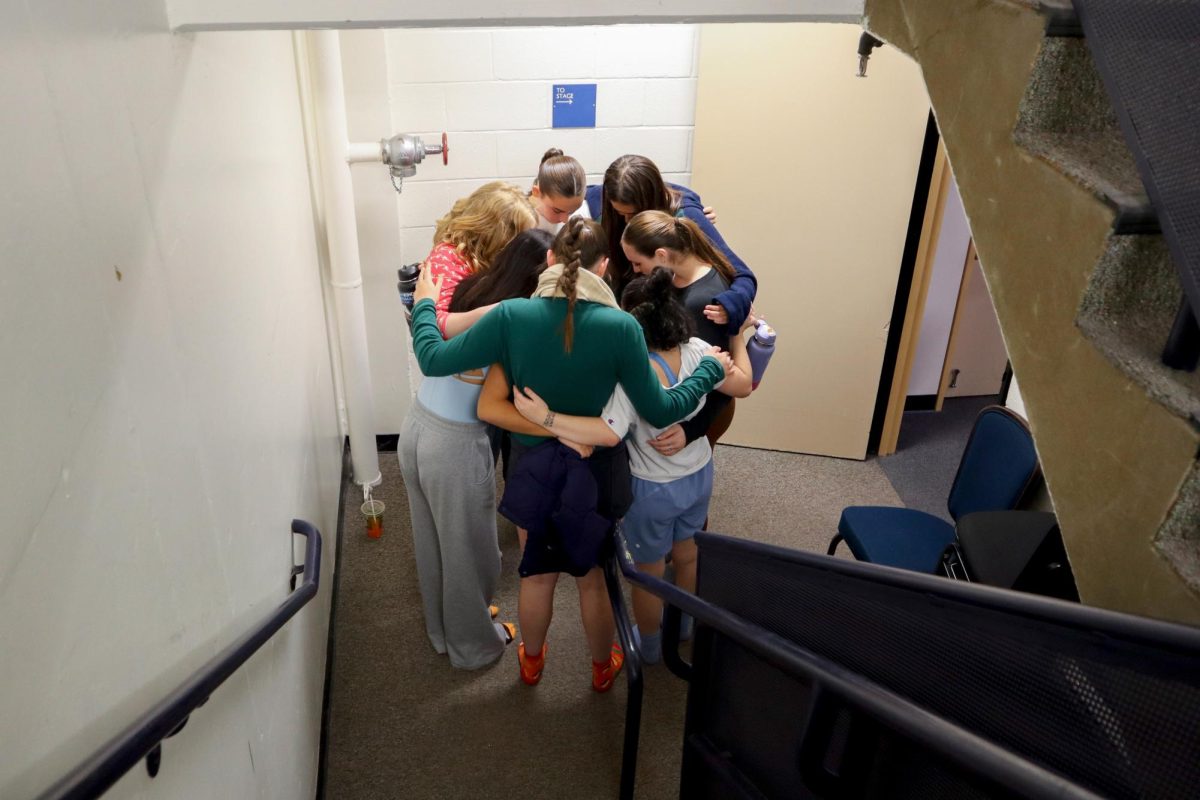
Jessi Payton isn’t sure if she wants to make a career out of teaching. But next summer, the senior will move to Mississippi to spend two years at one of the nation’s neediest schools as a new Teach for America recruit.
Her public service work, like extensive volunteer stints at local nonprofits, made her the kind of top candidate that has turned the University into a recruiting hotbed for the program. Seven percent of last year’s graduating class applied to the program and 37 students landed teaching gigs, up slightly from the year before.
“I just know this is something I’ve been presented with. This opportunity gives you so many great resources,” Payton said. “It’s only two years of my life, so I’m gonna take it and live with it.”
Teach for America has drawn sharp, well-publicized criticism from education reform experts, who say it’s unfair to expect 21-year-olds with five weeks of teaching training to be effective classroom leaders.
But the 22-year-old program – which gives students the full salary of a starting teacher, a host of healthcare benefits and help paying for a master’s degree in education – continues to appeal to top students looking for a rewarding challenge and a steady job.
GW sent the fifth-most graduates into the program of any medium-sized school this year, continuing a steady rise in Teach for America’s annual rankings. More than 300 GW graduates have entered the program over the last two decades.
When public service turns contentious
Teach for America has a prominent skeptic on GW’s campus: Michael Feuer, dean of the Graduate School of Education and Human Development.
Feuer, who also leads the National Academy for Education, said programs like Teach for America give the impression that anyone can walk into a classroom and start a solid teaching career.
“One of the things about TFA is that you graduated from college, you did well, you’re smart, you’re energetic. Boom, you’re teaching algebra to a bunch of eighth graders whose parents are shooting dope and go figure,” he said, adding that students with a passion to go into teaching deserve praise.
Feuer’s criticism is echoed by factions of Teach for America alumni, who condemn the program for allegedly leaving its teachers ill-prepared for the classroom.
A group at the University of Minnesota wrote this year that Teach for America “creates harmful environments for its own recruits, placing them in complicated classroom situations with no real knowledge of pedagogy, let alone the community, or the issues of poverty and racism their students often face.”
Feuer said to be well-prepared and effective, teachers need to go through a post-graduate program, like GW’s education school, though he says the cost and time commitment often deter students from following that track.
“Teaching is the only profession I know where it’s believed that you can be put into a complex environment and you can be able to do it on day one, which is nuts if you think about it,” he said. “I’ll go out on a limb here, but teaching mathematics to elementary school kids is as complex as delivering an oral brief at the Supreme Court.”
Colin Green, chair of the department of curriculum and pedagogy at GW’s education school, said the popularity of Teach for America here is a testament to GW students’ commitment to public service and the public good.
But Green said he is concerned that the organization pitches a quick-fix solution for the country’s education woes, training recent college grads in “crash-course” five-week training programs and putting them into some of the most low-income, low-performing schools in the country.
“Teach for America is really a Band-Aid for a larger problem,” Green said.
But some students said they found support in their school systems, making the Teach for America experience a rewarding one.
Class of 2013 graduate Christina Ravelo, who is now in the program as a teacher in Dallas, applied for the corps as well as jobs on Capitol Hill and in lobbying firms. But she said she accepted the position with Teach for America because it felt like a more personal job.
“It’s a people job, and that’s so powerful to me,” Ravelo said.
Now, Ravelo is in charge of a class of 17 bilingual kindergartners. Only two months into her tenure, she’s already seen progress in one student, who went from knowing none of the letters in the alphabet to more than half.
“They trust you to believe in them. I don’t know what other job can give you that,” Ravelo said.
Heavy recruitment brings rewards
Once the fall semester begins, the organization aims for new recruits, as representatives pour information and meeting requests into top students’ inboxes.
“We need talented people like you to help us bend the arc of injustice that is educational inequity in America,” one recruiter said in an email to candidates earlier this fall. “I know you may not be an ‘education person.’ Neither was I when Teach For America reached out to me.”
Most GW students’ choices to apply for Teach for America come after talking to campus representative Katie Hennig.
Hennig meets one-on-one with students and gives presentations for classes and student organizations. She said she thinks GW students are strong Teach for America candidates because of their passion for social justice.
“They understand that a mile away from Foggy Bottom is Anacostia, where the state of education looks different than Georgetown, which sets them apart from other schools who might not have the understanding of the problems we’re trying to adjust,” she said.
Senior Stella Ju, a fine arts and art history double major, said she knew that she wanted to be a teacher and jumped at the opportunity to work for Teach for America. As an undergraduate, Ju tutored with the nonprofit JumpStart at two different schools in D.C.
“I definitely know I want to work in education for the rest of my life, and Teach for America is going to be the best experience for me,” Ju said.
An intensive marketing strategy has made the program’s name pervasive for targeted students. Class of 2013 alumnus J.C. Stiassni recalls meeting with his on-campus representative five times before applying and receiving reminder emails until he submitted his application.
Stiassni, who majored in history and plans to teach science and math in Cleveland, will begin training next May. He declined a job opportunity at a consulting firm to give teaching a shot because he said he could always enter the consulting field later on.
Recruitment associate Tanya Choudhury, who graduated from GW in 2009, said Teach for America’s recruitment style, which focuses on intimate relationships between the applicant and the on-campus associate, ensures that the student knows the serious demands of the program.
“We’re talking about kids’ lives. This is not your typical job, so a lot of what we do is to make sure people understand what they’re getting into, and have a lot of clarity about our mission and our work and what that looks like,” Choudhury said.
This post was updated Dec. 5, 2013 to reflect the following:
Correction appended
The Hatchet incorrectly reported Colin Green’s first name as Michael. We regret this error.






